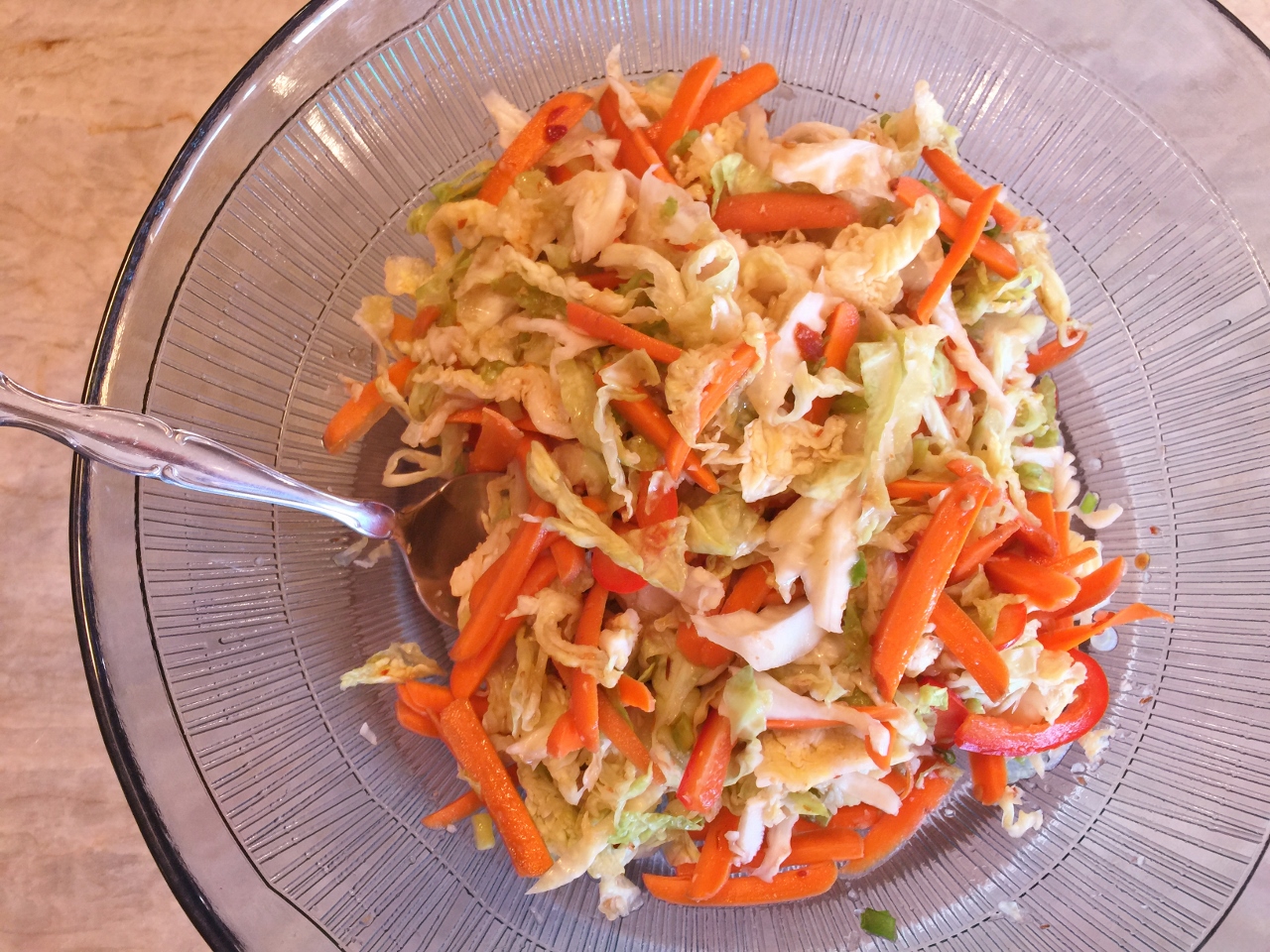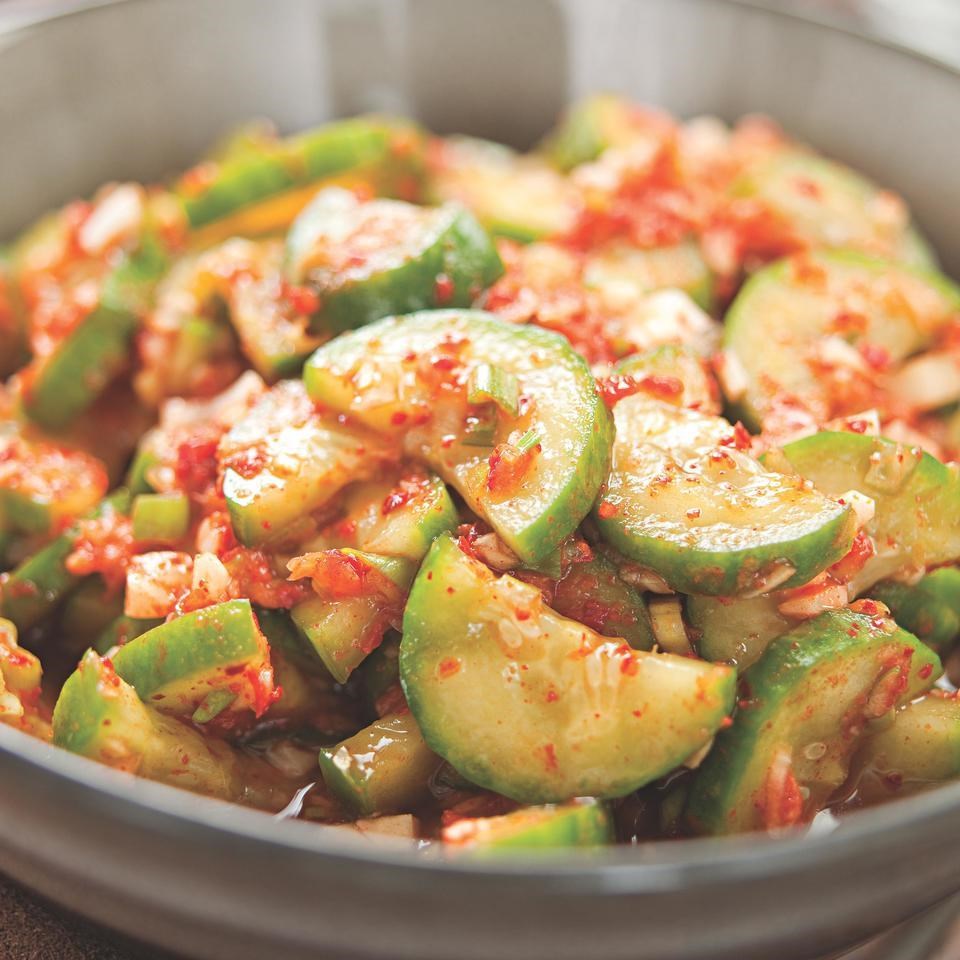Prepare to embark on a culinary journey to the heart of Korean gastronomy with this quick and easy kimchi recipe. Kimchi, a beloved staple in Korean cuisine, is a fermented vegetable dish bursting with flavors and health benefits. In this guide, we will delve into the art of crafting quick kimchi, exploring its essential ingredients, preparation methods, and serving suggestions.
Kimchi holds a special place in Korean culture, transcending its culinary significance to become an integral part of the nation’s identity. Its unique blend of spicy, sour, and umami flavors tantalizes taste buds and complements a wide range of dishes.
Additionally, kimchi is a rich source of probiotics, beneficial bacteria that promote gut health and overall well-being.
Ingredients
Making quick kimchi requires a few essential ingredients that work together to create its characteristic flavors and textures.
The base of the kimchi is typically made with vegetables such as napa cabbage, daikon radish, and carrots. These vegetables provide a crunchy texture and a slightly bitter flavor.
Spices and Seasonings
The spices and seasonings used in quick kimchi are crucial for developing its distinct taste. These include:
- Gochugaru (Korean chili powder): This ingredient adds a spicy and slightly smoky flavor to the kimchi.
- Gochujang (Korean chili paste): A fermented chili paste that contributes a sweet and spicy flavor, as well as a deep red color.
- Garlic: Freshly minced garlic provides a pungent and aromatic flavor.
- Ginger: Freshly grated ginger adds a warm and slightly spicy flavor.
- Sugar: A small amount of sugar helps to balance the spicy and sour flavors of the kimchi.
li>Fish sauce: This ingredient adds a salty and umami flavor, enhancing the overall taste of the kimchi.
Preparation
The preparation of kimchi involves meticulous steps to ensure the proper fermentation and flavor development.
To begin, the vegetables are meticulously cleaned and sliced or cut into bite-sized pieces. This step ensures even distribution of the seasonings and promotes uniform fermentation.
Salting the Vegetables
Once the vegetables are prepared, they are generously coated with coarse salt and left to rest for several hours or overnight. This process, known as salting, draws out excess moisture from the vegetables, creating a favorable environment for the fermentation process.
Mixing the Ingredients
After salting, the vegetables are thoroughly rinsed and drained to remove excess salt. The drained vegetables are then combined with the remaining ingredients, including gochugaru (Korean chili powder), garlic, ginger, and various seasonings. This mixture is carefully blended until a thick and flavorful paste forms.
Fermentation
Fermentation is the process that gives kimchi its characteristic sour and spicy flavor. Lactic acid bacteria (LAB), which are beneficial bacteria, convert the sugars in the vegetables into lactic acid. This acid preserves the kimchi and gives it its tangy flavor.
Storing kimchi for optimal fermentation
To ensure proper fermentation, store the kimchi in an airtight container at room temperature for 3-4 days. After this initial fermentation period, the kimchi can be stored in the refrigerator for up to several months.
Variations
Quick kimchi offers versatility in its ingredients, allowing for experimentation and customization. Variations arise from the use of different vegetables, spices, and seasonings, each imparting unique flavors and textures to the kimchi.
Vegetable Variations
The choice of vegetables can significantly alter the texture and taste of kimchi. Common vegetables used include Napa cabbage, Korean radish, cucumber, carrot, and scallions. Each vegetable contributes distinct characteristics:
- Napa cabbage: The traditional base of kimchi, providing a crisp and slightly bitter flavor.
- Korean radish: Adds a crunchy texture and a peppery kick.
- Cucumber: Offers a refreshing crunch and a cooling effect.
- Carrot: Adds sweetness and a vibrant color.
- Scallions: Enhance the flavor with their sharp, oniony taste.
Spice and Seasoning Variations
Spices and seasonings play a crucial role in shaping the flavor profile of kimchi. Variations include:
- Gochugaru (Korean chili powder): Provides heat and a vibrant red color.
- Ginger: Adds a warming and aromatic flavor.
- Garlic: Imparts a pungent and savory taste.
- Jeotgal (fermented seafood): Enhances the umami and adds a salty, fishy flavor.
- Vinegar: Adds acidity and helps preserve the kimchi.
Table of Variations
The following table summarizes the ingredients and flavors of different kimchi variations:
| Variation | Ingredients | Flavor Profile |
|---|---|---|
| Traditional Kimchi | Napa cabbage, Korean radish, gochugaru, ginger, garlic, jeotgal | Spicy, umami, slightly bitter |
| Cucumber Kimchi | Cucumber, gochugaru, ginger, garlic, vinegar | Refreshing, crunchy, slightly sweet |
| Carrot Kimchi | Carrot, gochugaru, ginger, garlic, jeotgal | Sweet, crunchy, slightly spicy |
| Scallion Kimchi | Scallions, gochugaru, ginger, garlic, vinegar | Sharp, oniony, slightly acidic |
By experimenting with different ingredients and proportions, you can create unique and flavorful kimchi variations that cater to your preferences and culinary adventures.
Serving Suggestions

Quick kimchi is a versatile dish that can be enjoyed in a variety of ways. Serve it as a side dish to complement grilled meats, fish, or tofu. It also makes an excellent condiment for sandwiches, tacos, or burgers.
Incorporate quick kimchi into other dishes for added flavor and texture. Stir it into stir-fries, soups, or salads. Try using it as a topping for pizza or pasta.
Menu Pairings
Quick kimchi pairs well with a variety of dishes. Consider serving it with:
- Grilled salmon with roasted vegetables
- Chicken stir-fry with brown rice
- Pork tacos with cilantro and lime
- Vegetable soup with a side of crusty bread
- Bibimbap with rice, vegetables, and a fried egg
Closing Summary

With its vibrant flavors and remarkable versatility, quick kimchi is a culinary treasure that will elevate your meals and introduce you to the captivating world of Korean cuisine. Whether you’re a seasoned kimchi enthusiast or a curious newcomer, this recipe will guide you effortlessly through the process of creating this delectable dish.
Embrace the flavors of Korea and enjoy the health benefits of fermented vegetables with this quick kimchi recipe.
FAQ Summary
How long does it take to make quick kimchi?
Quick kimchi can be ready to enjoy in as little as 30 minutes, making it a convenient option for busy individuals.
Can I use other vegetables in my quick kimchi?
Yes, feel free to experiment with different vegetables. Popular alternatives include carrots, radishes, or cucumbers.
How do I store quick kimchi?
Store quick kimchi in an airtight container in the refrigerator for up to 2 weeks. It will continue to ferment over time, developing a more intense flavor.
Can I make quick kimchi without fish sauce?
Yes, you can substitute soy sauce or tamari for fish sauce to create a vegan-friendly version of quick kimchi.
